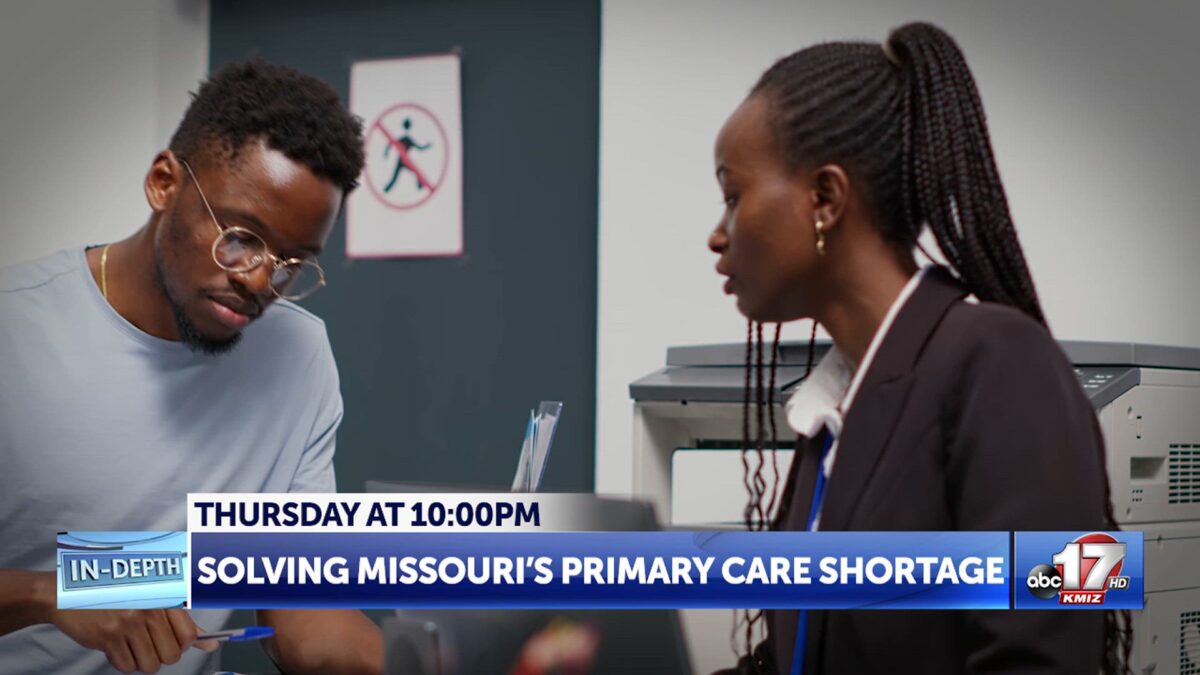Missouri is among states with the worst health care professional shortages

Gabrielle Teiner
COLUMBIA, Mo. (KMIZ)
Almost every Missouri county — 111 out of 114 — is designated as a Health Professional Shortage Area, leaving many Missourians struggling to establish and maintain primary care.
“We are struggling with primary care access, just like every state across the country,” said Dr. Heidi Miller, the chief medical officer with the Missouri Department of Health and Senior Services. “This is a national problem, and in Missouri, we are absolutely 100% feeling it.”
Miller says right now, Missouri is short almost 500 primary care physicians, and it’s only projected to get worse.
“We understand that by 2026, we will have a shortage of 2,000 physicians in the state of Missouri, so we have a catastrophic health care workforce shortage,” Miller said.
Missouri has the fourth-worst shortage in terms of Health Professional Shortage Areas, with Arkansas, Texas and California having the most.
In Missouri, there are three types of Health Professional Shortage Areas — when there are more than 3,500 patients per provider available.
A geographic HPSA means there are not enough providers for the residents in a specific location. A population HPSA means a shortage of providers within a defined geographic location, such as low-income populations. A facility HPSA is a public or non-profit private medical facility, like a Federally Qualified Health Center.
According to DHSS, Missouri would need 476 primary care physicians to remove the HPSA designation for primary care. The areas with the most needs are rural.
The shortage in primary care can be attributed to too few residency slots for medical school graduates, an aging physician workforce, doctor burnout and financial disparities.
Missouri has six medical schools, graduating around 1,000 new physicians per year, but it only has about 700 residency slots available for post-graduate medical training needed to become a fully licensed doctor.
“There’s been a really big push to increase the number of residencies, in primary care in communities, because we know that where people go to residency is often where they want to stay and practice,” said Dr. Whitney LeFevre, assistant professor of family and community medicine and Rural Scholars Program medical director at the University of Missouri. “It’s about attracting, I think, students to fill those slots, has continued to be a little bit of an upward challenge.”
The National Center for Health Workforce Analysis states the primary care physician workforce is older than other occupations, with 42.2% of family medicine physicians over the age of 54.
According to Dr. Natalie Long, President of the Missouri Academy of Family Physicians, physician burnout is hitting primary care hard.
“That can make people work less than full time to make their job more doable, and that can decrease access to patients,” Long said.
Administrative burdens like doing paperwork and charts can also take time away from a patient.
“It’s completing the paperwork, it’s writing your notes, finishing your documentation, coordinating care, those things often are more likely to happen outside of the traditional 8-to-5,” Long said. “We want to do the patient care. That’s what brings us joy. And, filling out paperwork doesn’t bring anyone joy.”
In 2024, the average primary care physician made around $265,000, whereas a specialist made an average of $382,000.
“A lot of students get sort of put off by wanting to go into primary care because they’re worried that they’re not going to be able to pay for the housing, and worsening the debt that they’re facing,” LeFevre said.
This issue is only exacerbated by the split between MU Health Care and Anthem Blue Cross Blue Shield in March, leaving patients with even fewer primary care options.
“The biggest worry is that people are going to be stuck at home, unable to get preventative or primary care and end up much sicker than they need to be, in hospitals and urgent care, and spending a lot more money,” said LeFevre.
Tune in to ABC 17 News at 10 on Thursday for a special report on Mid-Missouri’s primary care doctor shortage.